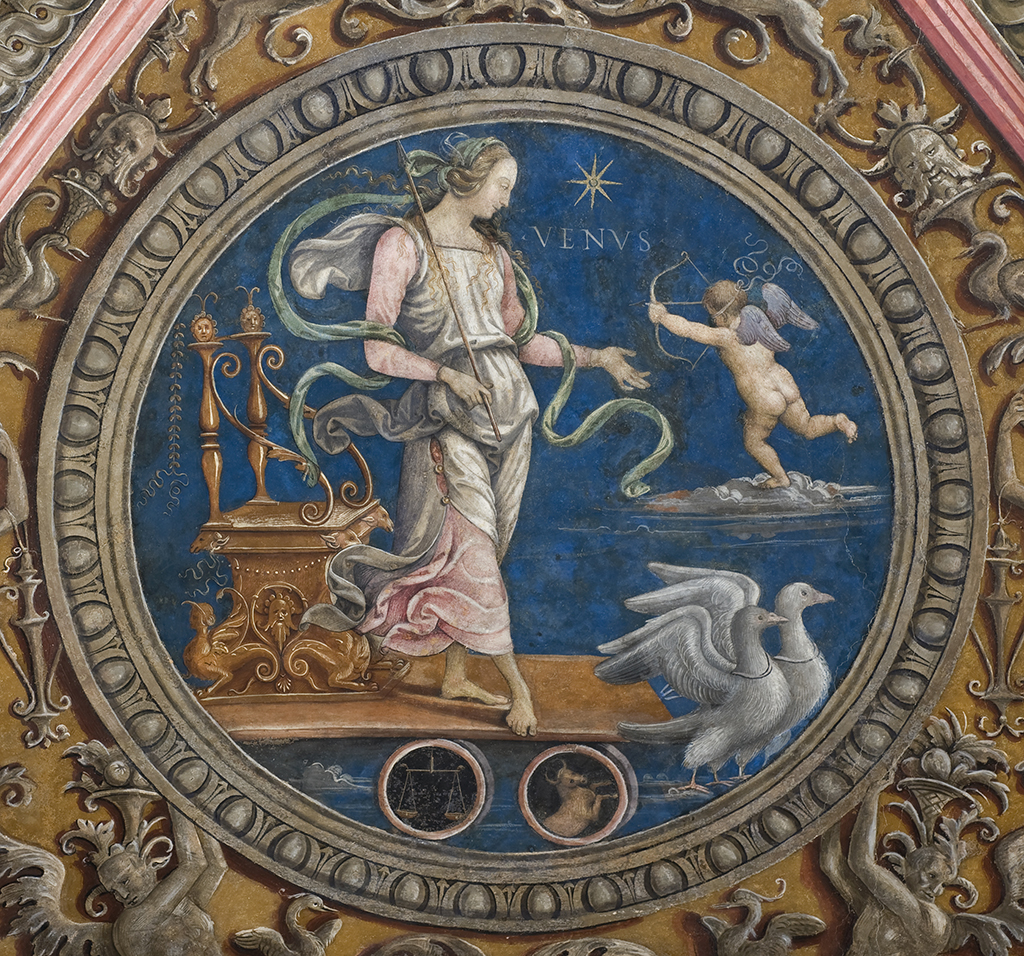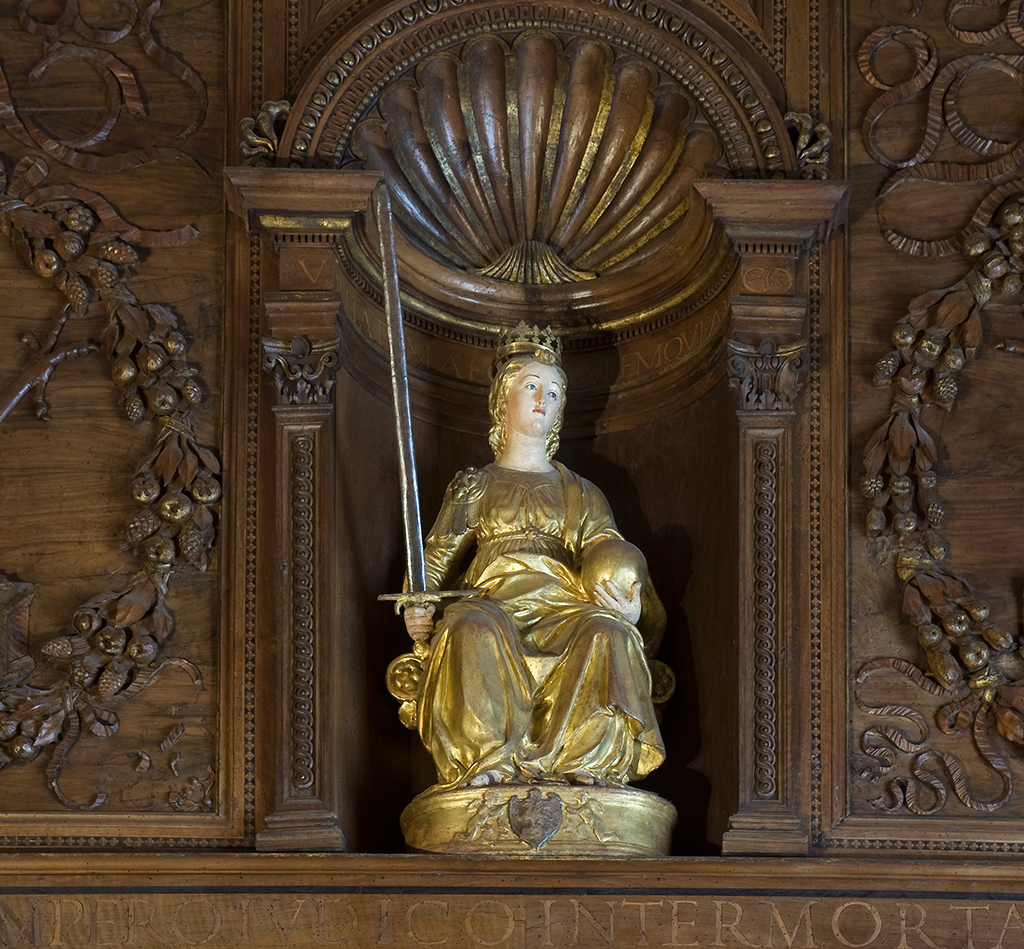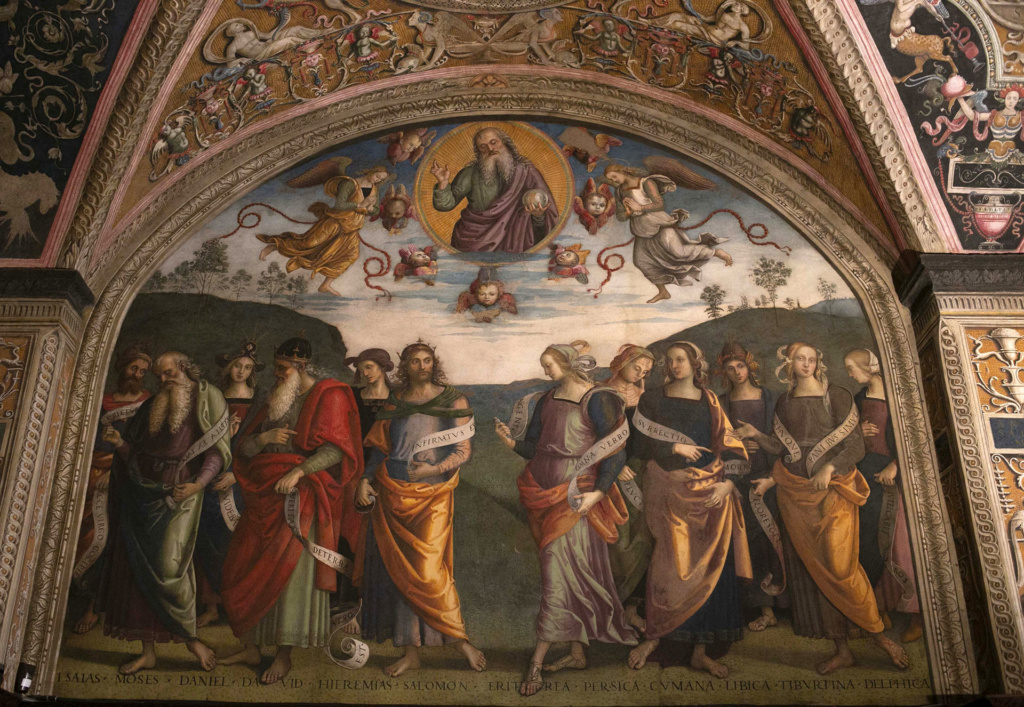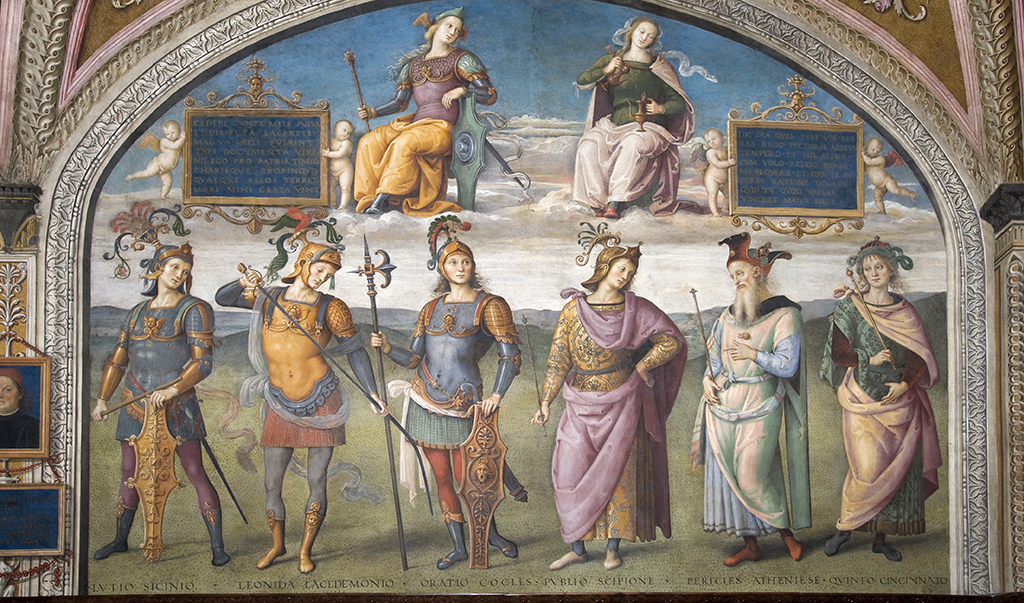It takes its name from the place where the auditors met, who were the top judiciary of the Art.
Amongst the guilds of art in Perugia, the most powerful were the those of the Merchants and Money Changers because of the importance they held in urban life and the government of the town.
The Guild register of 1377 explicitly states “Ars Cambi quae est pars magna totius Reipublicar Civitatis”. The main purposes of the art were to supervise legitimate money changing and to pronounce sentences on civil cases within the ambit of its specific competences, therefore the Guild took on the role of court.The works for the new seat, included in the Palazzo Pubblico (main building), started in 1452 and finished in 1457.


Starting from 1490, decoration of the environment began; at first the Florentine Domenico del Tasso created the bench and posterns.
In 1492 the gilded terracotta stature of the Justice, attributed to Benedetto da Maiano, came from Florence.
On 26 January 1496, the consuls together with the jurors agreed to have the vaults painted and, shortly after, the contract with Pietro Perugino was stipulated, the original preliminary of which has recently been found.
Works began from the vault where, in the seven ribs, allegorical figures representing the planets Moon, Mercury, Mars, Saturn, Jupiter, Venus with Apollo in the centre, in a rich grotesque decoration, where decorative and monstrous figures follow each other.
Their origins are to be found in the ancient world, especially Nero’s “Domus Aurea”, as well as in the modern one, in ceramic motifs, local heraldry and imitation mosaic ornaments, according to devices already used in Pinturicchio’s Roman ceilings.
Once this part of the enterprise by the disciples of the Master on his drawings was accomplished, they moved on to the walls where the iconographic theme was dictated by the humanist Francesco Maturanzio, professor at Vicenza and Venice, and secretary of the Decemviri (Latin for 10 men) after his return to his homeland around 1498.


It is Maturanzio who inserted the magniloquent Latin verses that appear in the explanatory tables held by cherubs and inserted in the frescoes, from which we deduce pure Neoplatonic guiding thought.

